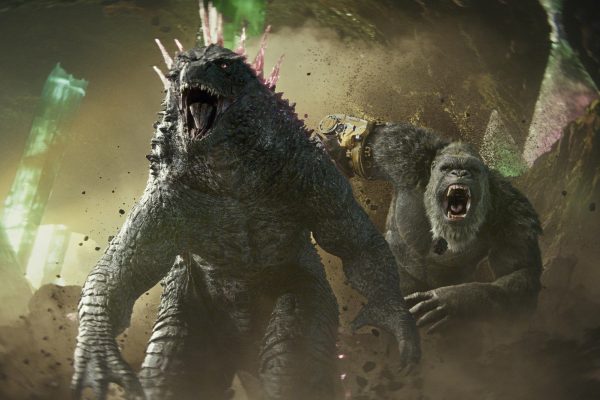Special effects boost films
March 30, 2017
Modern science-fiction thrillers are boasting large production budgets and A-list celebrity casts but may be lacking when it comes to storytelling.
The genre has continually struggled with how many digital effects are used to make the story believable without pushing it over the edge. “Life,” released in 2017, is a visually spectacular film from the outside of the spaceship to the looming abyss of darkness surrounding it. The computer generated imagery, or CGI, used to create the spacecraft, the environment and the alien creature named Calvin are convincing and incredibly stunning.
In recent years, filmmakers have begun to use special effects such as CGI and other digital effects more frequently in their work. These effects allow filmmakers to tell stories that would be near impossible to do justice without, including “Star Wars: The Force Awakens,” released in 2015, and “Captain America: Civil War,” released in 2016.
There seems to be a correlation between the use of special effects and storytelling: filmmakers are beginning to substitute good storytelling for bigger effects. This doesn’t mean that a ‘good’ film can’t contain any CGI — many box office hits have just the right amount. “Avengers: Age of Ultron,” released in 2015, had a $250 million budget and turned out to be a giant box office success, grossing a domestic total of $460 million and over $1.4 billion worldwide, according to IMDb.
Some filmmakers tend to neglect dialogue and overall narrative in exchange for dazzling visual effects. “Jupiter Ascending,” released in 2015, was a box office flop and studio disappointment. The film’s production budget swelled from $130 million to over $175 million because of the extensive and repetitive CGI. The film grossed a measly $18 million on opening weekend and $47 million domestically to date. Warner Bros. found themselves over budget and in the hole millions of dollars with an original story-line but not enough substance and creativity behind it. The director’s biggest mistake was relying on visuals instead of plot.
“Gravity,” released in 2013, was a sci-fi thriller that used a large amount of special effects but was a box office success. The film has grossed over $700 million worldwide to date. When administered to audiences in the proper dosage, CGI is a wonderful tool that enhances stories to make them more believable and captivating.
Many people associate special effects with huge costs, but that is not always the case. The use of CGI and special effects have proven to reduce production costs and free up money for other aspects of the film. “District 9,” released in 2009, had a budget of $30 million but looked like a film with a $150 million budget. Director Niell Blomkamp used his strong knowledge of special effects to maximize efficiency and avoid an inflated budget. Blomkamp’s film was a success and grossed $210 million worldwide.
“CGI actually cuts down production costs and employs more people,” said communication professor Matthew Swan. “Without effects, you have a lot of extra work — costumes, set, etcetera — all of which would be obsolete with the use the CGI.”
By using digital effects, the needs for supplies, multiple locations and hand-drawn animation are reduced or eliminated. Swan said while he does believe current films put more emphasis on visual effects and less on character development, there are occasions, such as in “Life,” in which an exception is surpassed and the film is breathtaking.












